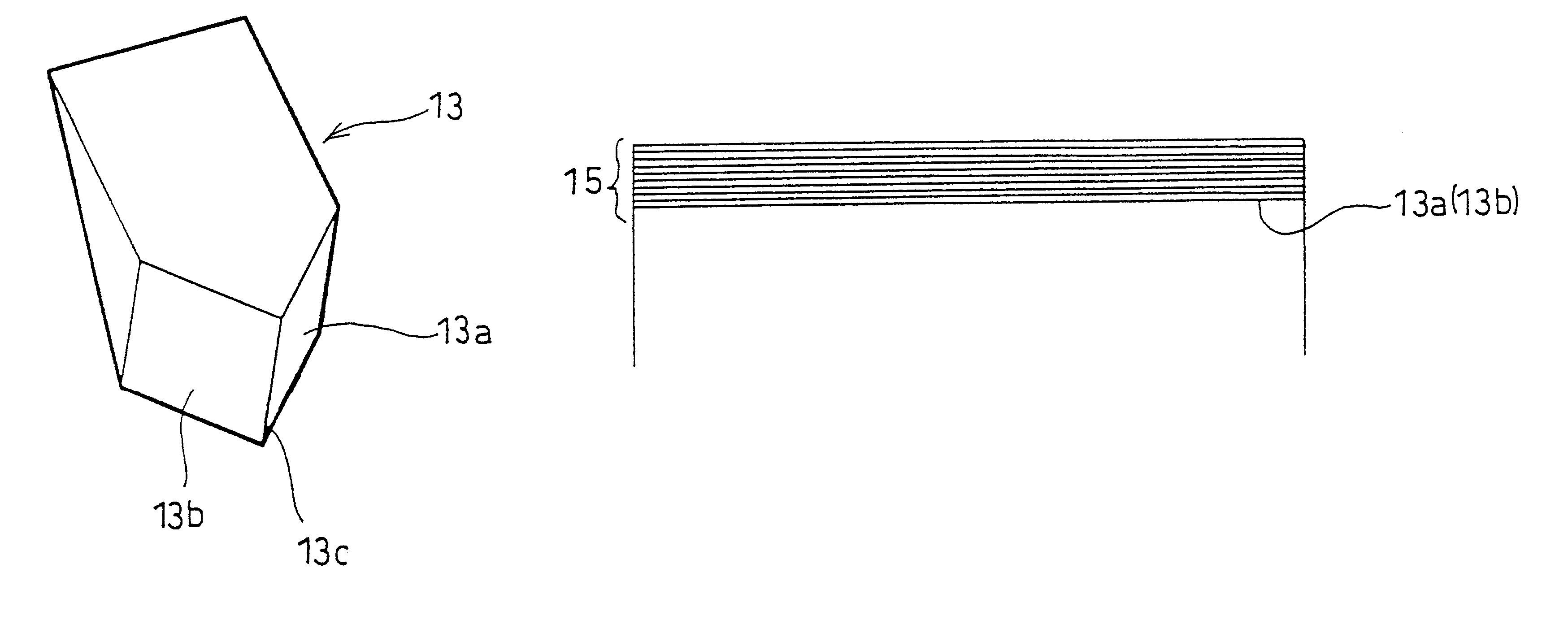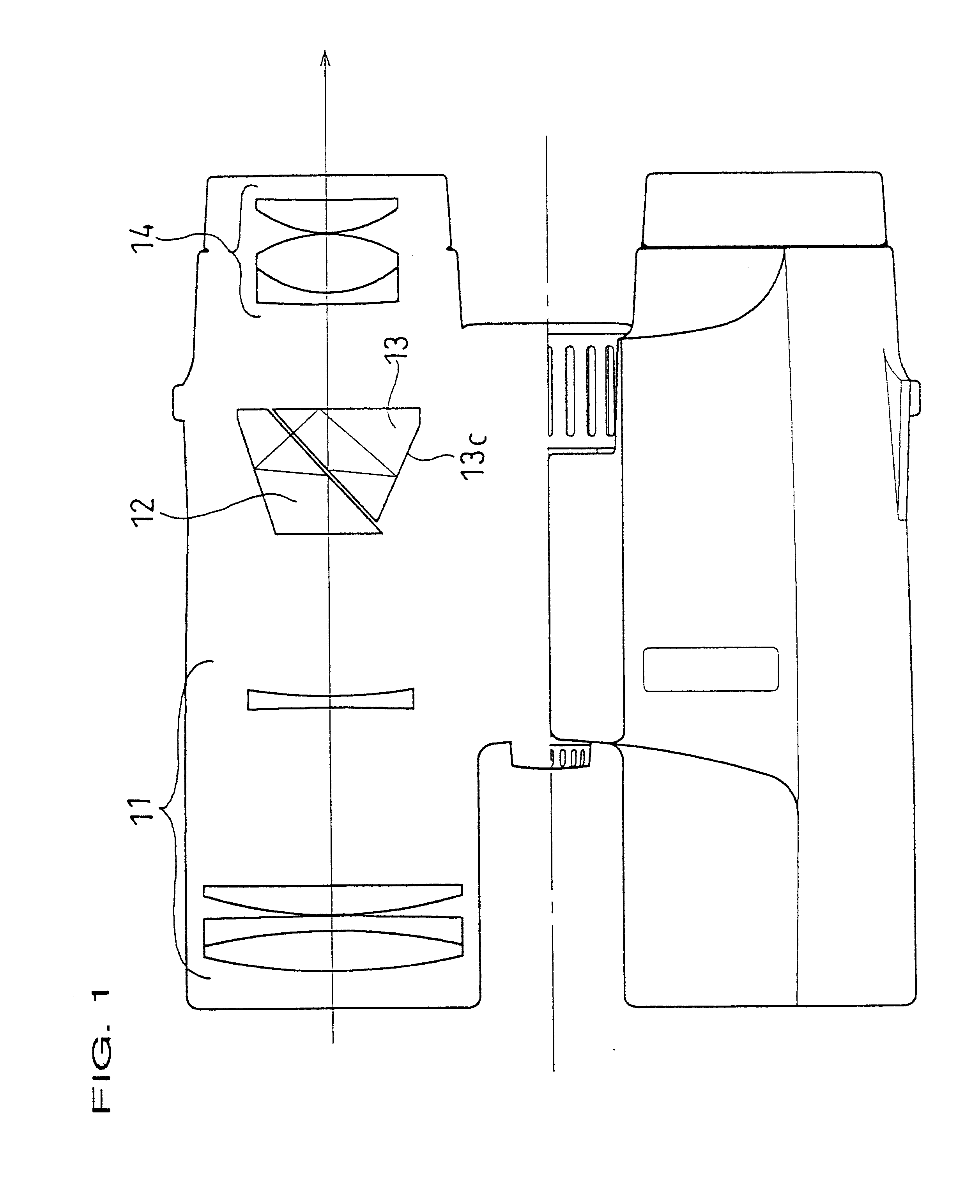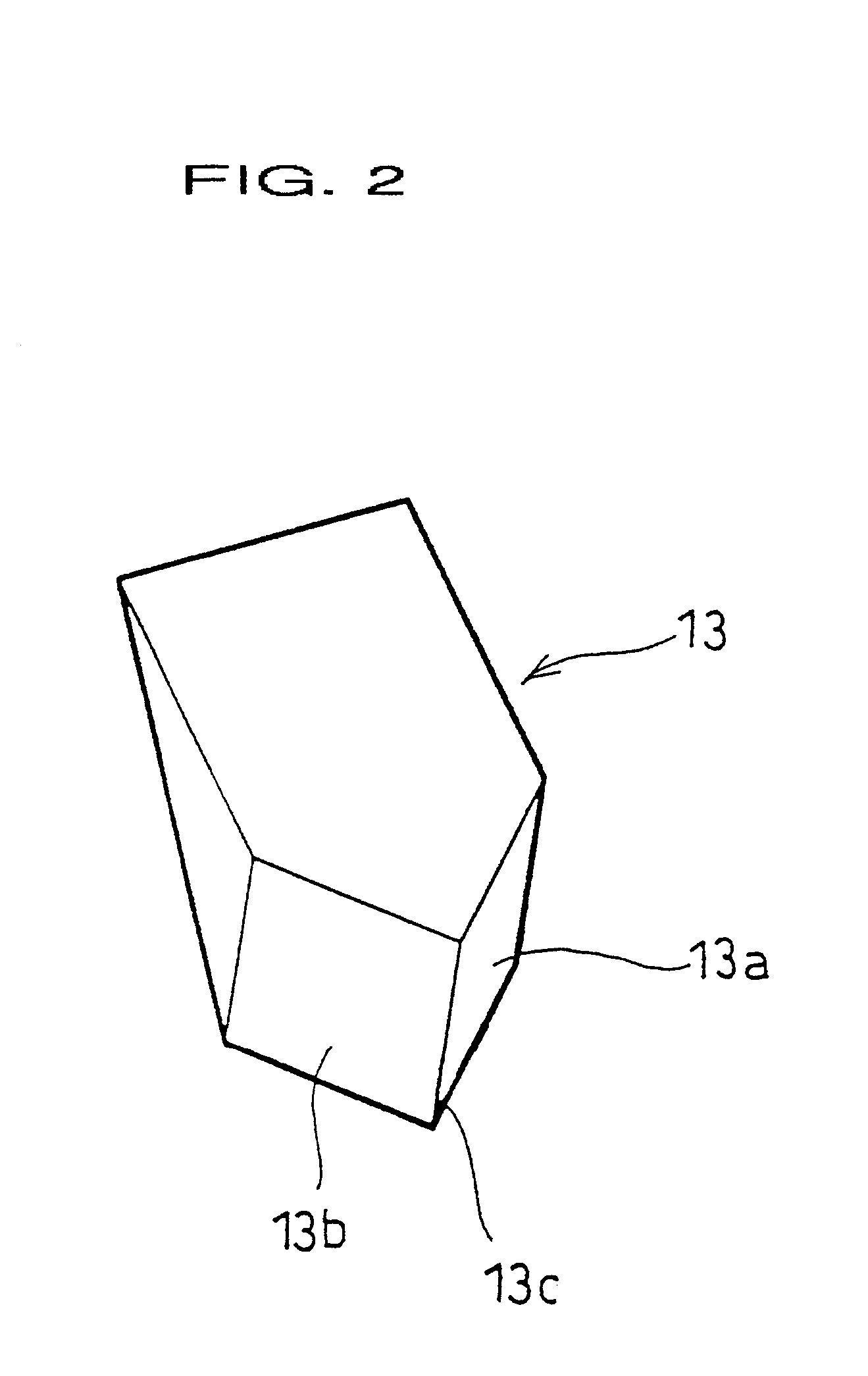Viewing optical instrument having roof prism and a roof prism
a technology of optical instruments and prisms, applied in the field of viewing optical instruments, can solve the problems of inability to reduce phase differences sufficiently, and determining whether the deterioration of images to be viewed is caused
- Summary
- Abstract
- Description
- Claims
- Application Information
AI Technical Summary
Problems solved by technology
Method used
Image
Examples
first embodiment
The dielectric layer 15 shown in FIG. 5 is composed of 9 layers superimposed on the roof prism 13. Table 1 below shows numerical data of the When the extinction coefficient K is 0 (K=0), no absorption of light occurs.
Monitor wavelength;550 nm
Refractive index of roof prism: 1.5181 (Material Type: BK7)
Accuracy of roof prism face angle: 90.degree..+-.5" (.epsilon.=5")
Diameter D(mm) of light flux in section, perpendicular to the direction of incidence thereof, incident on the total reflection surfaces: 6 mm
D.times..epsilon.=30 (mm.multidot.seconds)
FIG. 6 shows a reflectance R of each wavelength when the light flux which is incident on the reflection surface of the roof-prism 13 through the objective lens 11 at an angle of incidence of -1.degree. with respect to the optical axis of the lens 11 (at an incident angle of 47.74.degree. on the reflection surface) in the first embodiment. The reflectance of 100% is obtained in the entire wavelength range (400 to 700 nm) of the visible light. ...
embodiment 2
The dielectric layer 15 shown in FIG. 5 is comprised of 9 layers superimposed on the roof prism 13. Table 2 shows the numerical data for the second embodiment thereof.
Monitor wavelength;550 nm
Refractive index of roof prism;1.489 (Material Type: BK5)
Accuracy of roof prism face angle;90.degree..+-.5" (.epsilon.=5")
Diameter D(mm) of light flux in section, perpendicular to the direction of incidence thereof, incident on the total reflection surfaces: 6 mm
D.times..epsilon.=30 (mm.multidot.seconds)
FIG. 10 shows a reflectance R of each wavelength when the light flux which is incident on the reflection surface of the roof-prism 13 through the objective lens 11 at an angle of incidence of +0.47.degree. with respect to the optical axis of the lens 11 (at an incident angle of 49.21.degree. on the roof-prism) in the second embodiment. The reflectance of 100% is obtained in the entire wavelength range (400 to 700 nm) of the visible light. FIG. 11 shows the change in the phase differences for the...
embodiment 3
The dielectric layer 15 shown in FIG. 5 is comprised of 9 layers superimposed on the roof prism 13. Table 3 shows numerical data thereof.
Monitor wavelength: 550 nm
Refractive index of roof prism: 1.499 (Material Type: BK7)
Accuracy of roof prism face angle: 90.degree..+-.5" (.epsilon.=5")
Diameter D(mm) of light flux in section, perpendicular to the direction of incidence thereof, incident on the total reflection surfaces: 6 mm
D.times..epsilon.=30 (mm.multidot.seconds)
PUM
 Login to View More
Login to View More Abstract
Description
Claims
Application Information
 Login to View More
Login to View More - R&D
- Intellectual Property
- Life Sciences
- Materials
- Tech Scout
- Unparalleled Data Quality
- Higher Quality Content
- 60% Fewer Hallucinations
Browse by: Latest US Patents, China's latest patents, Technical Efficacy Thesaurus, Application Domain, Technology Topic, Popular Technical Reports.
© 2025 PatSnap. All rights reserved.Legal|Privacy policy|Modern Slavery Act Transparency Statement|Sitemap|About US| Contact US: help@patsnap.com



